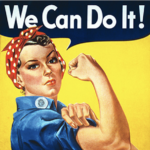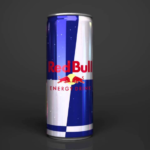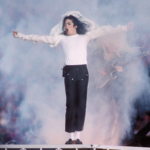District Court Extinguishes Copyright Infringement Claims

A United States District Court Judge recently extinguished a lawsuit brought by a hairstylist against Gwen Stefani, Pharrell Williams, and Interscope Records alleging direct, contributory, and vicarious copyright infringement based on defendants’ song, “Spark the Fire.” The lawsuit also included a separate conversion claim under California state law against Stefani only. Having been previously unsuccessful in obtaining a dismissal of the case when it was transferred from its original court in Colorado to California, the defendants filed a motion for summary judgment. Judge Dolly M. Gee granted this motion in favor of the defendants, finding the works in question were not substantially similar so as to sustain a claim for copyright infringement.
The plaintiff, Richard Morrill, is a singer/songwriter and former Huntington Beach hairstylist who allegedly colored and styled Stefani’s hair one time in 1998. Morrill is best known for his stint in the late 1980s/early 1990s metal band, L.A.P.D, an outfit which later became Korn. During his session with the then-twenty-something No Doubt star, Morrill played his song “Who’s Got My Lightah?” In response, Stefani claimed to like the song and agreed to accept a compact disc with the same on it. Morrill contends to have written and recorded his original version of “Who’s Got My Lightah?” in 1996, two years before sharing it with Stefani. Fast forward to 2014, during which time Morrill discovered the alleged infringement when Stefani and Williams performed their then-recent hit on “The Voice,” a television singing competition. The plaintiff further claims a 2009 derivative version of the song, “Who’s Got My Lighter,” is also infringed by “Spark the Fire,” although this version was not shared directly with Stefani or any of the defendants.
In his complaint, Morrill alleges the lyrics, chorus, rhythm, melody, metric placement, background music, and accompanying sounds in the defendants’ song and his two copyrighted works are extremely similar. More specifically, the plaintiff asserts there is structural similarity and recurring lyrics between the paired hook structures of the works. Plaintiff’s song features the lines “Who got my light-ah” followed by “who got my fi-ah” while defendants’ song contains “Who got the light-ah” and then “let’s spark the fire.” Moreover, Morrill pointed out the distinctive pronunciation that is different from standard English. For instance, the pronunciation of the words “lighter” and “fire” as “light-ah” and “fi-ah” is identical among the songs. The plaintiff further asserted that Stefani, Williams, and the label made at least $25 million from “Spark the Fire.”
A judge should properly grant a motion for summary judgment when the requesting party shows that there is no genuine dispute as to any material fact and that the requesting party is entitled to judgment as a matter of law. Once the moving party has met this burden, the nonmoving party then is required to demonstrate that there exists specific facts that create a genuine issue for trial. Copyright infringement occurs where (1) the plaintiff owns a valid copyright and (2) the defendant infringed elements of that work that are capable of copyright protection.
Here, there is no dispute that the plaintiff owns copyrights in both the 1996 original version and the 2009 derivative version of his song. That being said, absent evidence of direct copyright, infringement can be established by showing the defendant had access to the plaintiff’s work and that the works are substantially similar. In determining substantial similarity, courts break down the respective works into their constituent elements. Those elements are then compared for proof of copying. In this comparison, it is crucial to distinguish between protected and unprotected elements. More particularly, the scènes à faire doctrine provides that certain elements, which are stock or standard features commonly associated with the treatment of a given subject, are unprotectable under copyright law.
In dismissing the case through summary judgment, Judge Gee found Morrill failed to show substantial similarity between his copyrighted work and the accused song. Primarily, the court found pronunciation of the words “lighter” and “fire” as “light-ah” and “fi-ah” does not, in itself, demonstrate similarity. In particular, while this is not the pronunciation in standard English, pronouncing words that end in an “-er” with an “ah” sound is a common practice in African American vernacular English. In fact, according to the court, this practice predates Morrill’s 1996 song and is viewed as a staple in rap and hip-hop music, as well as, other types of media. Moreover, deleting verbs is another common practice in African American vernacular English. For instance, the court cited pronunciation of “who got” instead of “who’s got” in the movie “Billy Madison.” As another example, the court referred to the identical pronunciation of the words “fire” and “lighter” in The Roots’ song, “Push Up Ya Lighter.”
As another matter, the court determined that the common practice of rhyming the last word in the line of a song is not protectable. Specifically, the plaintiff claimed the respective songs are substantially similar, in part, because of identical rhyming of the words “light-ah” and “fi-ah” on the fourth beat of each song. Additionally, the presence of a long-short-long rhythm does not render the two songs rhythmically similar as this practice is too general to be protectable. Furthermore, the alleged “similar rhythms” are implemented in vastly different manners in each song.
Lastly, Judge Gee concluded there was no infringement of the 2009 version of the plaintiff’s song because it is a derivative work. Copyright in a derivative work only subsists in the material contributed by the author of such work. Protection is limited to changes and contributions made and does not cover preexisting material, such as the plaintiff’s 1996 version of the song. With all of this in mind, the court ultimately concluded Morrill did not sufficiently establish substantial similarity so as to present a genuine issue of material fact for trial.
Read More








